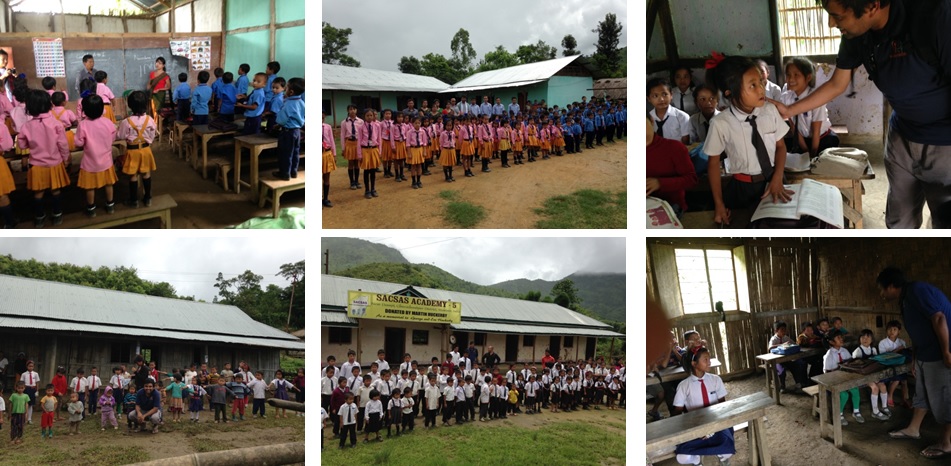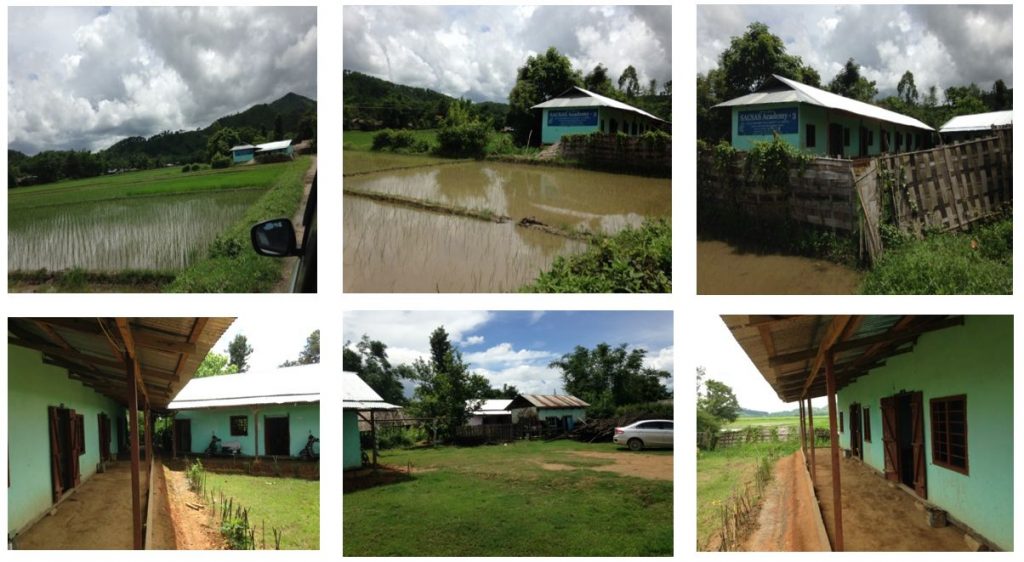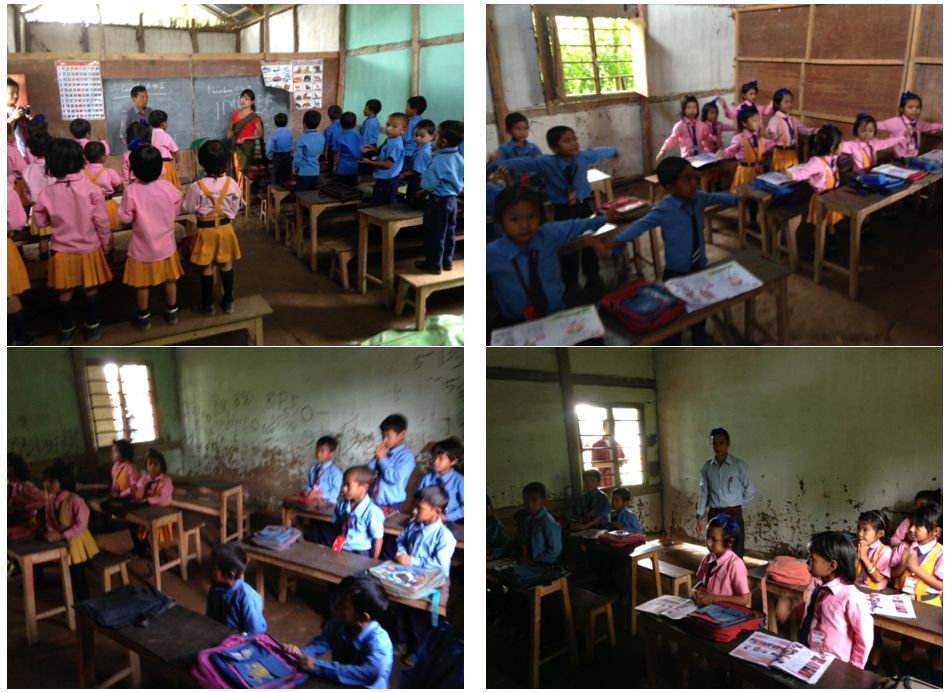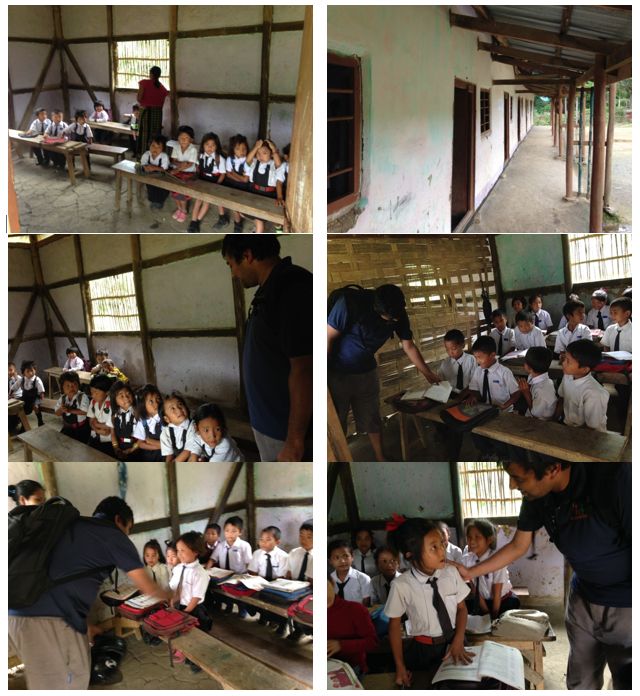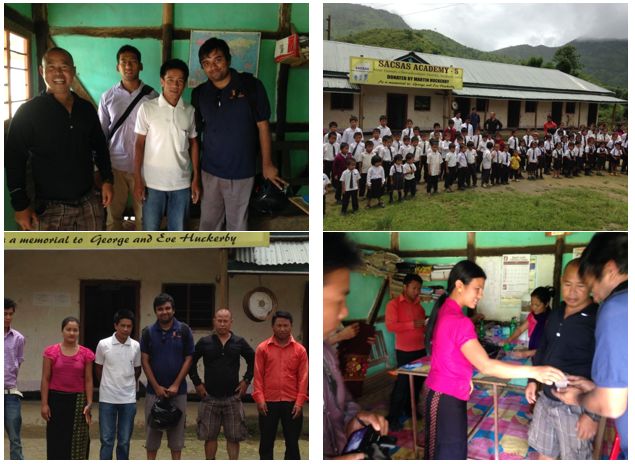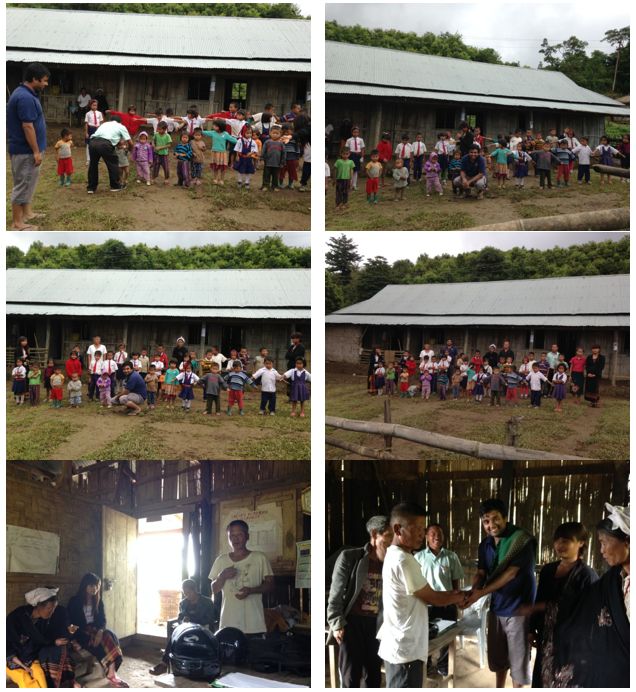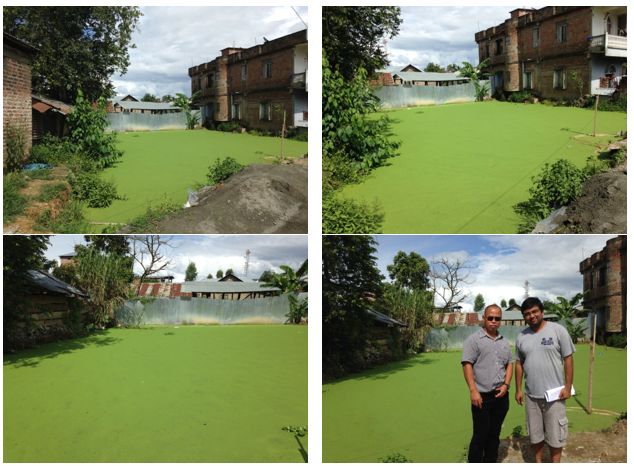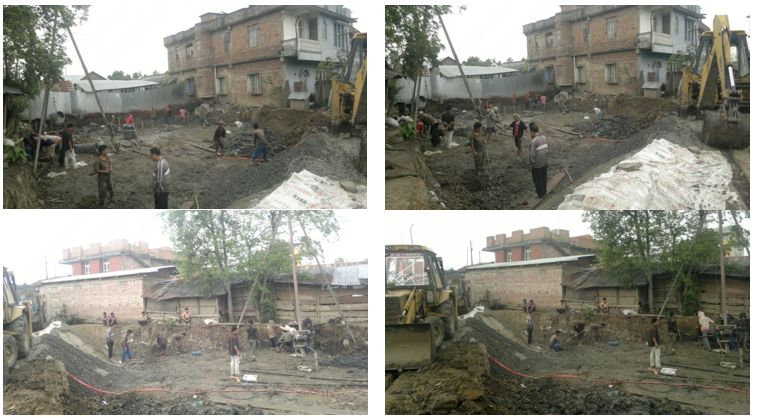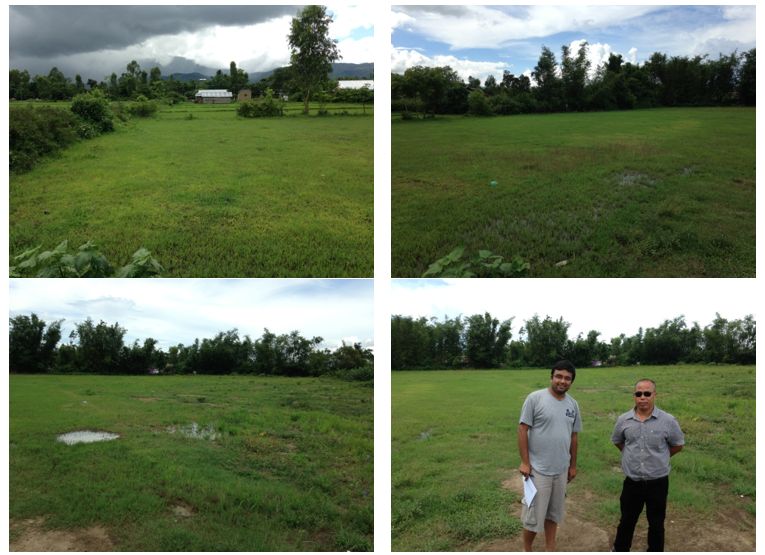A site visit report by Tapomayukh Bhattacharjee, Asha Atlanta
| Site/Project | 3 Schools managed by SACSAS, Manipur at · Loilamkot village, · New Dampi village, and · Wangoo village1 Hospital construction site managed by SACSAS, Manipur at · Moirang town |
| Visit Date | · 22nd July, 2015 for school at Wangoo village and Hospital construction site at Moirang · 23rd July, 2015 for schools at New Dampi and Loilamkot villages |
| Asha’s Visitor | Tapomayukh Bhattacharjee |
| Project Coordinator | Shantikumar Ningthoujam (SACSAS President) |
| Project Host | Surjit K. Khuman (SACSAS Secretary) |
| Funding requested by | SACSAS, Manipur |
| Organization Details | SACSAS has 3 office bearers (Shantikumar, Surjit, and Ratnakar) and 15 volunteers who are field workers supervised by Surjit. As an organization, the focus of SACSAS is 80% on education, 10% on community development, and 10% on health. |
| Other similar organizations in nearby areas | There are schools maintained by ‘Sarbo Siksha Abhijan’ in few areas but the general opinion is that there is no output and no field work. |
General situation in the remote areas of Manipur
In the remote areas of Manipur, there are almost 40 underground groups (UG groups) with 20 very strong. Due to tensions between these different factions, it is difficult to coordinate schools and general development activities there. There is very little motivation for education or very little awareness about the need for education. Basic facilities like drinking water, sanitation, etc. are lacking in some places. Non-Manipuris are being moved from the remote areas to the main cities by the government.
Wangoo School Site Visit
General Feedback: The visit was a planned visit. Surjit took me and another SACSAS volunteer and drove us to Wangoo village. It is located in a remote area but the road leading to the school from the main road is paved. It is not far from the main road and is at a walkable distance. I was given a very warm welcome.
As you can see, it is named SACSAS Academy-3 as it is the third school established by SACSAS. The school has classes from Nursery to Class VII. In general, the school is run well but the biggest problem is the awareness for the need of education. In the primary or lower classes, the number of students are more (15~20 in each class) when compared to students in the higher classes (Class III to VII) where the number is 5~10. This is mainly because as the children grow up, their parents need them to work and earn money. In hilly areas, I was told that there is a proverb: “Pen is not necessary”. The teachers were not very fluent in English and when I wanted to ask them any questions, they collectively told me to ask their Headmaster instead. It is a very hierarchical society. The Headmaster was not very fluent in English but Surjit was there to act as an interpreter. Here are some pictures of all the classes:
Categorized Feedback:
| Community Information | |
| How many families? | 200 houses |
| What do parents do for living? | All farmers, mostly small kitchen farming. 50% of the students are below poverty line or Orphans. |
| Conditions | Electricity present, toilets present, but no drinking water. They go to public pond, controlled by a UG group, to get water. |
| Organization and Environment | |
| Why did SACSAS establish a school here? | Because of proximity to Moirang and how affected the area is. |
| When did Asha become involved? | 2008 |
| During enrollment, does the school ask for names of both parents? | No, just father’s name |
| How often do teachers meet parents? | Once a month |
| What do they talk about? | Mostly teachers / Headmaster talking about the value of education and listening to parents’ issues if any. |
| How much fees? | Only fee: Rs. 10/15 development fee |
| Facilities | Uniform provided, Books provided to 50 / 60 students based on level of poverty. |
| Participation of parents? | Very little. They are mostly busy with their day-to-day work. Villagers comprise the development committee. Surjit visits 3 times per month. |
| Other Schools? | 4 government schools in the area (5~6 Kms.). Not very effective as they are namesake. |
| Why do parents choose this school over the other schools? | Mostly distance. Nearest school is 3~4 Kms. away. |
| Regular Class Strength | 120 to 130 students. 200 students are enrolled officially. School runs from 9.30 am to 2 pm. |
| Do children enjoy coming to school? | Yes, they seem to attend the classes well. I was greeted fervently and they recited poems and acted some of the songs they sang. Through my brief interactions with them (asking names, what they are studying etc.), I got good response from some students whereas some students were too shy to answer anything. |
| School and Teaching Details | |
| Mode of Teaching | Manipur State Board |
| Classes | Nursery to Class VII |
| What do children do after graduating from Class VII? | Most just work with parents. Very few go for higher education (secondary schools). |
| How many students attended on the date of visit? | 103 students. It’s the 2nd day after school opened, so less attendance. Some students also come from multiple neighboring villages. |
| Subjects | English, Science, Mathematics, Manipuri, GK, Hindi, Social Science |
| Student Pass rate | 80% |
| Staff? | Headmaster, 9 teachers, 1 Chowkidaar |
| Gender ratio | 4 female teachers, 5 male teachers, Student gender ratio is almost 50-50. |
| How many teachers have left the school in the past one year and why? | Payment is less. So, 2 resigned but they were replaced |
| Training of teachers | Selection criteria: qualification (BA to Class 12), teaching experience (teaching method, team work) etc. and willingness for voluntary work. |
| Staff payment | Headmaster : Rs. 4500/- Teachers: Rs. 4000/- (Newly recruited teachers are paid less). |
| Staff payment in other govt. schools | Rs. 30,000/- in secondary level for regular teachers |
| Need for improvement | |
| · Staff payment needs to be increased so that teachers can be retained in the school. Other govt. schools pay much higher salaries. · Regular power cuts: Need generator · Need two computers · Floors are currently made of mud. Need concrete structures · No sports infrastructure (need land) | |
New Dampi School Site Visit
General Feedback: The visit was a planned visit. Surjit took me and two other SACSAS volunteers and we went by bike to New Dampi village. It is located in a very remote area and the roads are not paved and in horrible conditions. It is difficult to even bike there because of the rains. No mobile connection is present obviously.
This school is named SACSAS Academy-5 as it is the fifth school established by SACSAS. The school has classes from Nursery to Class VI. In general, the school is run well but the biggest problem is the same as before, the awareness for the need of education. The general trends are also same as there is a lot of drop-out in the bigger classes because as the children grow up, their parents need them to work and earn money. In addition, this village is very close to UG camp and is frequented by UG groups as well as Indian army soldiers. In fact, the headmaster of this school was mistakenly shot by the Indian army once. The Indian army has built one monitoring shelter just opposite to the school. My visit to this school was arranged such that only the school teachers knew I was coming but it was kept secret from other families because of the risk of leaking the information. I was strictly told not to divulge my true identity and where I come from but to say, if asked, that I am from Assam. Also, I had to wear helmets and sunglass during the entire trip just to avoid being seen as a non-Manipuri. These villages in Manipur have kings who supervise everything. A special permission was taken from village king for my arrival. The headmaster here had fluent English skills, and so communication with the headmaster was not a problem. Other teachers were not that fluent but Surjit was there to translate if necessary. I was given a very warm welcome. Here are some pictures from my visit:
Categorized Feedback:
| Community Information | |
| How many families? | 150 houses |
| What do parents do for living? | Collection of wood, small kitchen farming |
| Conditions | Electricity provided very recently, only kaccha toilets (so, not permanent), drinking water available. |
| Organization and Environment | |
| Why did SACSAS establish a school here? | Because how affected the area is. |
| When did Asha become involved? | 2006. |
| During enrollment, does the school ask for names of both parents? | No, just father’s name |
| How often do teachers meet parents? | Once a month, but not of much use as parents rarely attend |
| What do they talk about? | Mostly teachers / Headmaster talking about the value of education and listening to parents’ issues if any. |
| How much fees? | Only fee: Rs. 20 development fee. But many families cannot give it. |
| Facilities | Uniform provided, Books provided. |
| Participation of parents? | Very little. They are mostly busy with their day-to-day work. Villagers comprise the development committee. |
| Other Schools? | No Schools |
| Why do parents choose this school over the other schools? | No school in the vicinity |
| Regular Class Strength | 80-100 students. 170 students are enrolled officially. |
| Do children enjoy coming to school? | Yes, they seem to attend the classes well. I was greeted fervently. Through my brief interactions with them (asking names, what they are studying etc.), I got good response from few students. Many students were too shy to answer anything. |
| School and Teaching Details | |
| Mode of Teaching | Manipur State Board |
| Classes | Nursery to Class VI |
| What do children do after graduating from Class VI? | Work with parents. |
| How many students attended on the date of visit? | 82 students. Less attendance because of rains. |
| Subjects | English, Science, Mathematics, Manipuri, GK, Hindi |
| Student Pass rate | 80% |
| Staff? | Headmaster, 7 teachers |
| Gender ratio | 4 female teachers, 3 male teachers, Student gender ratio is almost 50-50. |
| How many teachers have left the school in the past one year and why? | Payment is less. So, 1 resigned but he was replaced |
| Training of teachers | Selection criteria: qualification (Class 12 max.), and willingness for voluntary work and sacrifice. The first question asked is: “Are you willing to sacrifice?” During my interactions with one of the teachers, he mentioned that he thinks this is a noble mission and that is why he is doing this sacrifice and he does not mind. |
| Staff payment | Headmaster : Rs. 4500/- Teachers: Rs. 4000/- (Newly recruited teachers are paid less). |
| Staff payment in other govt. schools | No govt. schools |
| Need for improvement | |
| · Staff payment needs to be increased so that teachers can be retained in the school. · Need regular or ‘pakka’ toilets with septic tank. Rough estimate Rs. 1.5 lakhs | |
Loilamkot School Site Visit
General Feedback: The visit was a planned visit. Surjit took me and two other SACSAS volunteers and we went by bike to Loilamkot village. It is located in an extremely remote hilly area and the roads in horrible conditions. It is difficult to even bike there because of the rains. Sometimes, you just have to walk. No mobile connection is present obviously.
This school is named SACSAS Academy-4 as it is the fourth school established by SACSAS. The school has classes from Nursery to Class VI. In general, the school is run well but the biggest problem is the same as before, the awareness for the need of education. The general trends are also same as there is a lot of drop-out in the bigger classes because as the children grow up, their parents need them to work and earn money. In addition, this village is very close to UG camp and is frequented by UG groups. In fact, I was shown the UG training camp from the school which was located very near and at the top of the hill. I myself saw three UG militants with weapons just walking past the school (20 feet from me). I was quickly instructed to go inside the classroom to avoid being seen. It is a dangerous place to visit indeed and Surjit, the host, instructed me to leave the place as soon as possible. Just like New Dampi school, my visit to this school was arranged such that only the school teachers knew I was coming but it was kept secret from other families because of the risk of leaking the information. I was strictly told not to divulge my true identity and where I come from but to say, if asked, that I am from Assam. Also, I had to wear helmets and sunglass during the entire trip just to avoid being seen as a non-Manipuri. These villages in Manipur have kings who supervise everything. A special permission was taken from village king for my arrival. The village king and queen also arrived at the school and gave a speech and talked about their problems (details below). The school is obviously at a worse infrastructural condition than the other schools I visited during this trip. The headmaster and the teachers here did not have English speaking kills. Surjit was there to translate if necessary. However, I was given a very warm welcome. Here are some pictures from my visit:
Categorized Feedback:
| Community Information | |
| How many families? | 60 houses |
| What do parents do for living? | Collection of wood, small kitchen farming and hill farming, basically ‘Jhum’ cultivation (shifting) |
| Conditions | Electricity provided very recently, only kaccha toilets (so, not permanent), no drinking water, nearest natural stream is 3 Kms. far. in a very steep area. |
| Organization and Environment | |
| Why did SACSAS establish a school here? | Because how affected the area is. |
| When did Asha become involved? | 2005. |
| During enrollment, does the school ask for names of both parents? | No, just father’s name |
| How often do teachers meet parents? | Rarely as parents are not very interested. The village king is interested in the progress though. |
| What do they talk about? | Mostly teachers / Headmaster talking about the value of education and listening to parents’ issues if any. |
| How much fees? | Only fee: Rs. 5 development fee. But no one pays. |
| Facilities | No uniforms, books for some students are provided. |
| Participation of parents? | Very little. They are mostly busy with their day-to-day work. |
| Other Schools? | No Schools |
| Why do parents choose this school over the other schools? | No school in the vicinity |
| Regular Class Strength | 40-50 students. 60 students are enrolled officially. |
| Do children enjoy coming to school? | Yes, they seem to attend the classes well. Though I found some very young kids sleeping in class, others seemed to enjoy it. Almost all the students were very shy to answer anything. |
| School and Teaching Details | |
| Mode of Teaching | Manipur State Board |
| Classes | Nursery to Class IV |
| What do children do after graduating from Class VI? | Work with parents. |
| How many students attended on the date of visit? | 35 students. Less attendance because of rains. Students from neighboring villages did not show up. |
| Subjects | English, Science, Mathematics, Manipuri |
| Student Pass rate | 80% |
| Staff? | Headmaster, 4 teachers |
| Gender ratio | 2 female teachers, 2 male teachers, Student gender ratio is almost 65-35 male-female. |
| How many teachers have left the school in the past one year and why? | Payment is less. So, 1 resigned but he was replaced. The Headmaster continues to work there because the village King has ordered so. This is out of respect in a hierarchical society. |
| Training of teachers | Selection criteria: qualification (2 teachers with Class 10, 1 with Class 12), and willingness for voluntary work and sacrifice. |
| Staff payment | Headmaster : Rs. 4500/- Teachers: Rs. 4000/- (Newly recruited teachers are paid less). But, only 50% payment is done. |
| Staff payment in other govt. schools | No govt. schools |
| Need for improvement | |
| · During the Village King’s speech (interpreted by Surjit), he talked about the problems of the village. The yearly income of most household is around Rs. 10,000 which is unbelievably low. So, the payment of the teachers should be on time as was requested by the King. · Need regular or ‘pakka’ toilets with septic tank and drinking water facilities. | |
- Please note that there were two more SACSAS Academy schools in villages named ‘Laishai’ and ‘Maovam’ which are located in the remotest and most dangerous areas. Due to the tensions in Manipur, curfew and issues with Inner Line permit during the visit, lack of time, and rainy weather conditions, we skipped the visit to these two schools.
SACSAS Hospital Construction Site Visit
The construction sites for the SACSAS Hospital are located at the heart of Moirang and are accessible by cars easily. The roads are paved. Surjit drove me to two Hospital sites. The first site is the site for the casualty hospital. Here are some pictures:
As you can see, the entire area is under water and therefore, no work is currently possible. After the rains started pouring heavily in May 2015, the work stopped. They are hoping to start the work in October after the rains stop completely. They had even tried pumping out the water but water keeps getting in due to rains. Roofing does not work as water keeps coming from the sides due to lower ground. In February 2015, digging had started and in March, pillars were installed. Originally the site was very deep. They had used > 1000 trucks of soil to raise the level to make it 4~5 feet deep. They installed 90 pillars in March. Here are some pictures of the construction work, which I got from Surjit:
The plan is to build 2 ICU’s with elevators, 5 storey-building with computerized facilities and telemedicine opportunities with 50 bed capacity. This will be the first Casualty Hospital in Moirang. They hope to finish the construction and begin functioning by 2017 late December. Currently, the existing community health centers can only do medical checkups but cannot do sophisticated operations. The nearest casualty hospital is in Imphal which is 45 Kms. far from there.
After this visit, Surjit took me to the site for the Main Hospital which is 2 Kms. from the Casualty Hospital site. Only the land is there. Construction hasn’t started there yet. The plan is to start the construction after the Casualty Hospital is built. Here are some pictures:
The plan is to make this a 150-bed hospital. Currently, the existing National Charitable hospital building is at a rented place with 15 beds. They have Minor OT, Ultrasound, X-ray, Gynecology, Orthopedics, Psychiatric, Dermatology, Ophthalmology, etc. departments. So, this main hospital is a huge necessity to do any kind of substantial treatment in the vicinity, as Imphal, which has the nearest big hospital with all facilities, is 45 Kms. away.
Concluding Remarks
To wrap up, I have to say that these visits were very fruitful as they helped in getting a first-hand understanding of the entire situation and I gratefully thank Surjit, Shantikumar, and the other SACSAS volunteers for extending such warm hospitality and helping me visit these places in spite of the greatest odds and dangers. This was a great learning experience overall. I am convinced that good work is being done in all these sites and that, there is even greater need to continue this for the society there. This is very much in line with Asha’s goals and visions and what Asha stands for. Therefore, I strongly recommend that Asha continues to support all these sites.

